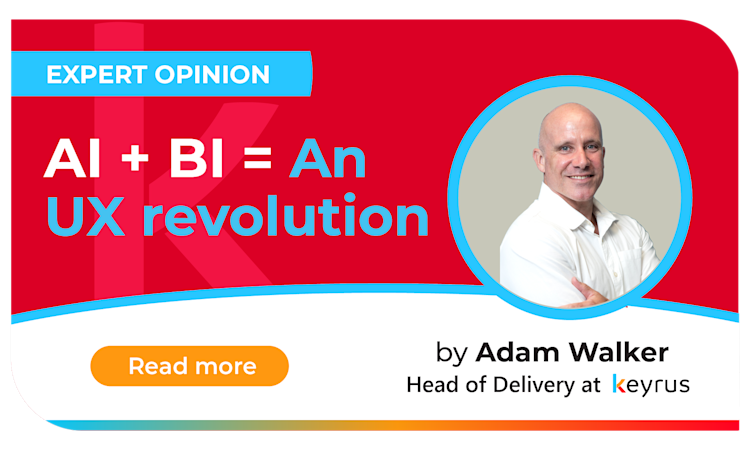For nearly two decades, dashboards have been the centrepiece of business intelligence. They gave us visibility, structure, and control over data that once felt opaque. But today, as artificial intelligence reshapes how we interact with information, the traditional dashboard is being redefined, not discarded, but reimagined. We are entering an era where the most powerful analytics interface may no longer be a chart or KPI card, but a conversation.
From visuals to dialogue
Dashboards were built for the visual thinker, the analyst who could connect trends, outliers, and correlations through well-designed visuals. But as organisations scale their data footprints, that model strains under its own complexity. Even the most elegant dashboard can’t anticipate every question an executive might ask.
AI changes this dynamic by introducing the language layer. Instead of navigating filters, hierarchies, or slicers, users can simply ask: “Why did sales spike in Q3?” or “Which regions are underperforming against forecast?” and receive an instant, contextual answer.
This conversational interface is not about replacing dashboards; it’s about liberating them. It lets business users move from reading data to interacting with it. In that shift lies a fundamental UX revolution: from dashboards as destinations to dashboards as dialogues.
The rise of conversational analytics
Conversational analytics isn’t science fiction; it’s the logical next step in BI’s evolution. Natural language processing, summarisation, and contextual reasoning now allow AI to interpret intent, not just syntax. This means that instead of designing ten dashboards for ten use cases, organisations can design one intelligent layer that adapts dynamically.
Imagine an executive board meeting where questions flow naturally, and the analytics platform responds like a trusted advisor, pulling up insights, highlighting anomalies, and even suggesting where attention should shift next.
That’s the promise of AI-augmented BI: not more data, but better dialogue.
AI as the new UX layer
The fusion of AI and BI is not only about automation ,it’s about empathy. Traditional dashboards assume every user thinks like an analyst. AI allows us to reverse that assumption.
By learning from user behaviour, preferences, and patterns, AI can shape the analytics experience to the individual. One executive may prefer concise summaries; another, deep-dive variance analysis. One department might value trend alerts, another real-time anomaly detection.
The interface itself begins to adapt, recommending what to look at, surfacing what matters most, and even narrating insights in natural language. This adaptive UX transforms analytics from a one-size-fits-all product into a personalised experience.
Reframing the role of the analysts
If AI makes dashboards conversational, where does that leave the human analyst? Far from obsolete, they become curators of dialogue. Analysts will focus less on constructing visual artefacts and more on designing the logic, governance, and semantic layers that make those conversations intelligent.
In other words, the analyst’s value shifts from producing answers to engineering better questions.
That’s a profound change in how data teams create value. The skillset expands beyond visual design and SQL into prompt engineering, data semantics, and user experience strategy.
The goal isn’t just a smarter dashboard; it’s a smarter organisation.
Governance meets generative
Of course, with new capability comes new risk. As AI enters the BI stack, the governance layer becomes critical. Generative interfaces can only be as reliable as the data they draw from and the context they’re allowed to interpret.
The challenge for leadership isn’t whether to adopt AI in BI, it’s how to govern it responsibly. That means:
Anchoring AI interactions to trusted semantic models.
Embedding security and lineage into every generated insight.
Defining clear boundaries between “assistive” and “autonomous” analytics.
Without these disciplines, conversational BI risks becoming confident but incorrect, a fluent storyteller disconnected from the truth.
Pragmatism over hype
For C-level executives, the temptation is to see AI-driven BI as another technological silver bullet. But the real opportunity lies in pragmatic transformation. Organisations that succeed won’t be those that deploy the flashiest tools, they’ll be the ones that align AI with how decisions actually get made.
That means starting with the business questions that matter most, designing data models that can answer them, and layering AI where it enhances comprehension, not where it adds noise.
The most mature organisations are already moving in this direction: building architectures that treat AI as an enabler of context, not a generator of chaos.
Reimagine, not replace
At Keyrus, we believe this evolution doesn’t signal the end of dashboards, it signals their rebirth. The goal is not to throw away years of BI investment but to elevate it: to make every metric speak, every chart listens, and every dashboard evolve with the user.
AI + BI isn’t a technology equation; it’s a user experience revolution. And that revolution starts by rethinking the dashboard not as a report, but as a conversation partner.
If your organisation is ready to explore what that evolution could look like, from architecture and governance to conversational analytics and user adoption, let’s start that conversation. Contact us at sales@keyrus.co.za
